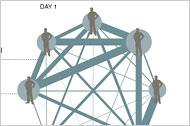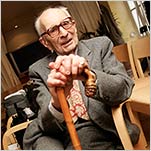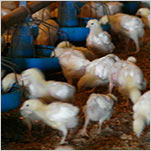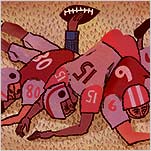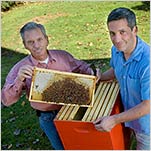(Page 3 of 3)
At the Center for Embedded Networked Sensing at the University of California, Los Angeles, for example, researchers are developing a Web service they call a Personal Environmental Impact Report to build a community map of air quality in Los Angeles. It is intended to let people assess how their activities affect the environment and to make decisions about their health. Users may decide to change their jogging route, or run at a different time of day, depending on air quality at the time.
Multimedia
“Our mantra is to make it possible to observe what was previously unobservable,” said Deborah Estrin, director of the center and a computer scientist at U.C.L.A.
But Dr. Estrin said the project still faced a host of challenges, both with the accuracy of tiny sensors and with the researchers’ ability to be certain that personal information remains private. She is skeptical about technical efforts to obscure the identity of individual contributors to databases of information collected by network sensors.
Attempts to blur the identity of individuals have only a limited capability, she said. The researchers encrypt the data to protect against identifying particular people, but that has limits.
“Even though we are protecting the information, it is still subject to subpoena and subject to bullying bosses or spouses,” she said.
She says that there may still be ways to protect privacy. “I can imagine a system where the data will disappear,” she said.
Already, activist groups have seized on the technology to improve the effectiveness of their organizing. A service called MobileActive helps nonprofit organizations around the world use mobile phones to harness the expertise and the energy of their participants, by sending out action alerts, for instance.
Pachube (pronounced “PATCH-bay”) is a Web service that lets people share real-time sensor data from anywhere in the world. With Pachube, one can combine and display sensor data, from the cost of energy in one location, to temperature and pollution monitoring, to data flowing from a buoy off the coast of Charleston, S.C., all creating an information-laden snapshot of the world.
Such a complete and constantly updated picture will undoubtedly redefine traditional notions of privacy.
DR. PENTLAND says there are ways to avoid surveillance-society pitfalls that lurk in the technology. For the commercial use of such information, he has proposed a set of principles derived from English common law to guarantee that people have ownership rights to data about their behavior. The idea revolves around three principles: that you have a right to possess your own data, that you control the data that is collected about you, and that you can destroy, remove or redeploy your data as you wish.
At the same time, he argued that individual privacy rights must also be weighed against the public good.
Citing the epidemic involving severe acute respiratory syndrome, or SARS, in recent years, he said technology would have helped health officials watch the movement of infected people as it happened, providing an opportunity to limit the spread of the disease.
“If I could have looked at the cellphone records, it could have been stopped that morning rather than a couple of weeks later,” he said. “I’m sorry, that trumps minute concerns about privacy.”
Indeed, some collective-intelligence researchers argue that strong concerns about privacy rights are a relatively recent phenomenon in human history.
“The new information tools symbolized by the Internet are radically changing the possibility of how we can organize large-scale human efforts,” said Thomas W. Malone, director of the M.I.T. Center for Collective Intelligence.
“For most of human history, people have lived in small tribes where everything they did was known by everyone they knew,” Dr. Malone said. “In some sense we’re becoming a global village. Privacy may turn out to have become an anomaly.”

